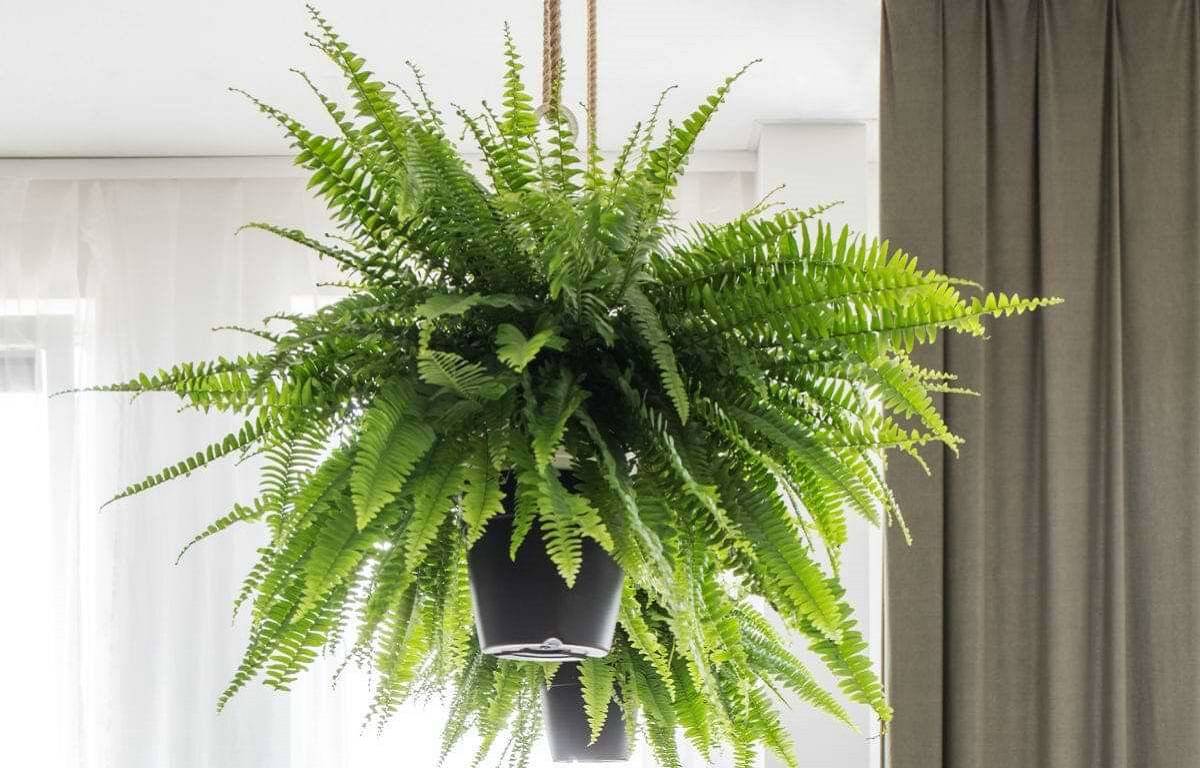
Although they grow wildly in the jungle under the canopy of trees, ferns are also very popular house plants that add unbeatable texture and lushness to any room when properly cared for. Ferns are generally low-maintenance plants but that doesn’t mean that it doesn’t require any assistance to grow. Ferns tend to need a little more care than putting it in a corner with enough light, humidity, and water.
Let’s take a look at how to properly take care of an indoor fern plant.
Sunlight- In the wild, ferns grow naturally in tropical rainforests under the canopies of trees. Therefore, it rarely ever receives any sunlight. The best place to keep ferns indoors is a place with indirect sunlight. However, during winter, you should move your fern plant near a window because the sun isn’t very strong.
Temperature- Most varieties of ferns are tropical plants that tend to thrive in hot and humid climates. The ideal temperature for between 16 to 25°C.
Water- Ferns like water because they are naturally found in rainforests, therefore, it is important to pour water into the plant evenly and ensure that the soil is consistently moist. It is important that you keep the soil damp and not soggy. Overwatering a plant can injure the plant and is a breeding ground for bacterial and fungal infections. Don’t let the soil completely dry out between watering.
Humidity- Ferns love humidity. They thrive in a humid environment, especially inside a terrarium because there is constant moisture in the air. Mist your fern on occasion if the soil is still soggy to avoid overwatering.
Soil- Although ferns can grow in all types of soil, however, soil that doesn’t drain water can harm the roots of the plant as its roots can’t be constantly wet. The most appropriate soil for fern will be well-draining soil which is a mixture of 1 part common indoor soil, 1 part coco peat, 1 part perlite, and 1 part coarse gravel.
Fertilizer- If you are planting a young fern plant, then it is important to replenish the soil and provide the plant with appropriate nutrients that will facilitate healthy growth. For this, you’ll need to feed fertilizer to your soil before planting a fern plant and then feed it again after 2 to 3 months depending upon the speed of its growth.
Fern is a fast-growing plant. Therefore, a mature fern plant will require proper nutrients to grow properly. Fern usually grows in the summer and its growth becomes dormant during the winter. So, the best time to add liquid houseplant fertilizer is once every month between April and September. You don’t have to feed your plant during winter because it isn’t actively growing then.
Repotting- If you can see roots emerging from the drainage hole of your fern pot, then that is a sign that your fern has outgrown its container and needs to be repotted. You can also re-pot your fern plant if it is not growing very evenly. Repotting is a great way of expanding the green cover of your home. Re-pot your fern plant right before its growing period and cut off any damaged fronds during the process to encourage growth.
Common problems associated while taking care of fern plants
Ferns are easy-to-maintain plants. However, they can face some issues because of wrongdoings on our part but they can also recover quickly once you have correctly recognized the issue with it. If the leaves of your fern plant are getting crispy and brown, then it is because you are either overwatering the plant or you have placed it in direct sunlight.
Although leaves drop from the plant occasionally, however, if it starts falling suddenly, then that is because of underwatering. Yellow leaves on the other hand are because you are either using hard cold water to water the plant or because you have kept the plant in a place with low humidity.











